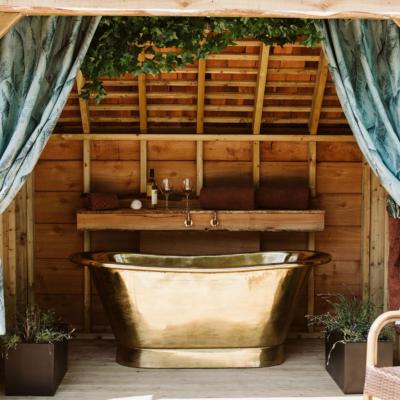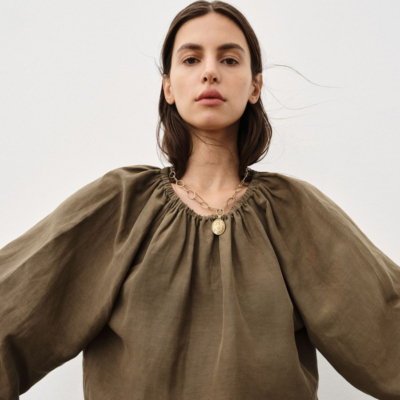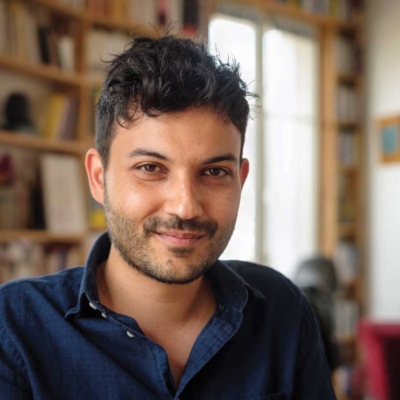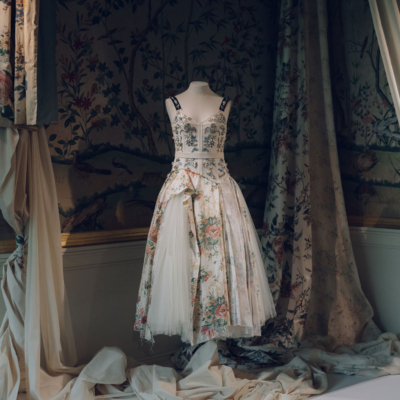In her latest book, organic farmer, wine educator and yoga teacher, Caro Feely continues her story of change and renewal in the Dordogne, France
“Brave or mad” said our GP at the time. An accountant friend said, “that’s risk with a capital R”. Both were right. Sean and I were about to leap from professional careers in Dublin to organic winegrowing in France with a toddler and a newborn. The farm we bought was in liquidation. That was a clue to the risk, but we were so set on our dream we ignored it. The risk wasn’t only financial. We soon realised that farming is tough and dangerous work. Sean lost a third of a finger in our first harvest, fortunately not into the wine. While Sean rolled up his sleeves and learned to prune vines, drive a tractor, and make wine, I learned to sell wine and do house renovations. It was hard to see how we were going to make the business viable. Despite this we dove into French life, the wonderful food, the markets, the history. Our daughters learned to be independent and gourmet early. In France, state-funded preschool starts at two and a half and includes a three-course lunch.
Château Feely was an early adopter of organic farming. When we arrived in France in 2005, one per cent of French vineyards were organic, today it is around 17 per cent. After three years of organic farming, wild orchids began to return, a sign that the systemic fungicides used by our predecessors, had worked their way out of the soil, and that the mycorrhizae – beneficial root fungi – had returned. We added biodynamic practices, essentially “organic plus”, the same year.

We have seen the effects of climate crisis up close. In 2020, Sean was working outside at 10.30am. It was the peak of a heatwave, already so hot that crossing the courtyard from our kitchen to the tasting room was a challenge. As I looked out of the window, I thought of going to tell him to get inside. Then I said to myself, “he knows his limits”. It was also so hot that crossing the 50 metres to reach him felt like mission impossible. That should have been the cue for me to force him inside, but I didn’t. Ten minutes later he came in. He was red and feverish and had a migraine, nausea, and cramps. It was heatstroke, a condition that can be fatal if not addressed swiftly. Sean followed Doctor Internet’s instructions. He took a cool bath and drank plenty of water. His headache was so bad he couldn’t read, he lay in a dark room with the shutters closed and the fan on, drinking water and taking paracetamol. It took two days of feeling seriously sick and staying in bed to recover. The same extreme day, one of our chickens died, despite having deep shade and fresh water.
The ten warmest years in the historical record have all occurred since 2010. In 2022 we started harvest a full month earlier than we did in 2006, our first vintage. Extreme weather events like late frosts and hail are more frequent, meaning more crop loss. A recent study showed that people are convinced that we humans are causing climate change, and that it is real, but less than half of those people felt it would affect them directly. There is denial about how connected we are, and how critical the life support systems of earth are to us. Directly experiencing a hurricane, flood, wildfire, extreme heatwave, or any other catastrophic results of climate crisis, quickly dispels that idea. The truth is, before any fancy comforts, we need air, water, food, and basic shelter. These life-critical elements are being damaged by burning fossil fuels.
But fear of climate catastrophes isn’t what will make change; it might even freeze us into doing nothing. The positive effect of reconnecting with nature and community is far more potent. I have great hope for the transformation ahead of us. When I see how fast our farm’s biodiversity returned and the benefits of it, I am filled with hope. Nature has an exceptional ability to recover when we give her the opportunity. About ten years ago, when we changed to hand-picking all our grapes and were no longer obliged to keep the vine trellis clear for the harvest machine, Sean encouraged ivy to grow every 20 metres or so. Ivy flowers in late autumn providing much-needed pollen for bees and their ilk. It is also a massive biodiversity booster. An oak tree with ivy can host double the number of species – around 500 – than the same oak tree without ivy. Sean also began to nurture native trees that established themselves in the trellis rows. Trees offer natural buffering against climate change, decrease the impact of frost, and provide habitat for beneficial insects and other creatures and resilience.
When I walk with guests along the hedgerows, I introduce the trees and plants by name: oak, walnut, willow, hazel, hawthorn, dog rose, bramble.
There are wider benefits. In the last few years, we wondered why we didn’t have a problem with European grapeworm anymore. It turns out that bats are our ally. Bats love eating the European grapevine moth that lays its eggs on the grapes, thus solving the grapeworm issue for us. Bats need habitat in the form of hedgerows, forests, cliffs with caves, which we are fortunate to have. But bats will only fly about 30 metres into a monoculture like a vineyard. To go further, they need navigation points in the form of plants or trees of different heights. The ivy and trees in the vineyard provided that. By encouraging ivy and trees for other reasons we ended up solving the grapeworm problem.
When I walk with guests along the hedgerows, I introduce the trees and plants by name: oak, walnut, willow, hazel, blackthorn, hawthorn, dog rose, bramble. The vineyard floor is also a mass of biodiversity: clovers, grasses, vetch, wild orchids, buttercups and more. Each plant brings a benefit, for example, clover fixes nitrogen, acting as a natural fertiliser or “green manure” as we call it in farming. I introduce the old vine Merlot, the young fiery Cabernet Sauvignon, the luscious, peaceful grandmother Semillon, the zesty Sauvignon Blanc. Respect is built by us knowing them, by getting close. Taking time to sit on the grass, to respect these beings, to feel the earth rather than concrete underneath me, to meet a friend for a walk outside instead of for retail therapy, turning off influencers that incite me to consume things I know will hurt people and planet, all make me feel better. Even small changes create ripple effects. Along with steps already taken like using 100 per cent green energy, choosing light glass bottles for all our wines and establishing a large rewilding area, we’re planning a major tree-planting project and spaces to share yoga and nature with visitors.

My latest book shares our experience of climate change and biodiversity as farmers and people. It also follows our lives as parents and partners, with children passing through adolescence, and then into the empty nest. Our toddler and newborn are young adults, Sophia just completed her second year of law studies at UCD and Ellie her final year of school in Bordeaux. Navigating our relationships through these phases wasn’t easy but I’m so grateful we did. There’s richness and complexity in longterm relationships, like aged wine. The changes needed to address the climate crisis and to increase biodiversity go to the root of how we live and how our economies operate. Sometimes it feels overwhelming. I turn to meditation and connect to the earth by lying on the grass. I find peace, a sense of interbeing with the universe, and gratitude for this planet we are privileged to call home.
Caro’s latest book Cultivating Change: Regenerating Land and Love in the Age of Climate Crisis, is published on June 15. @carofeely









